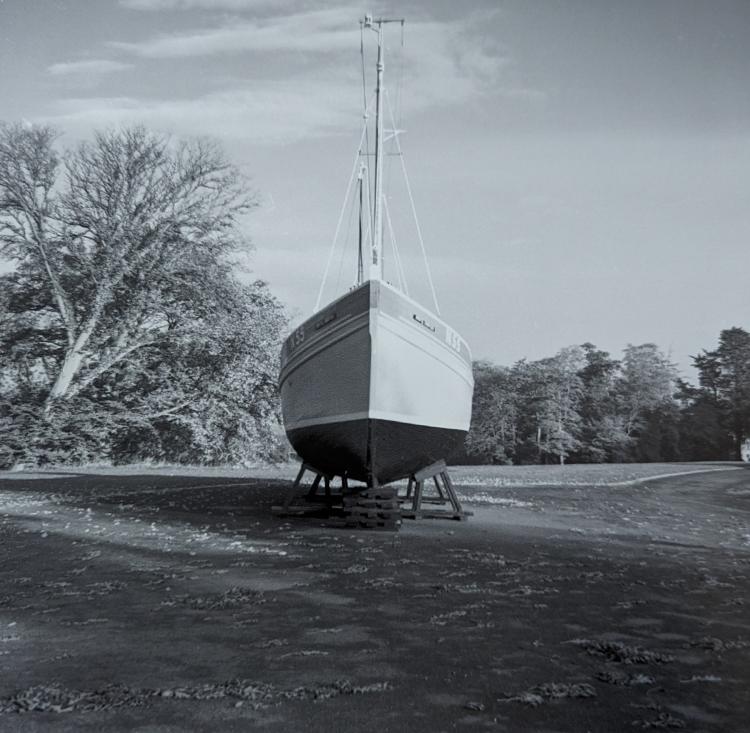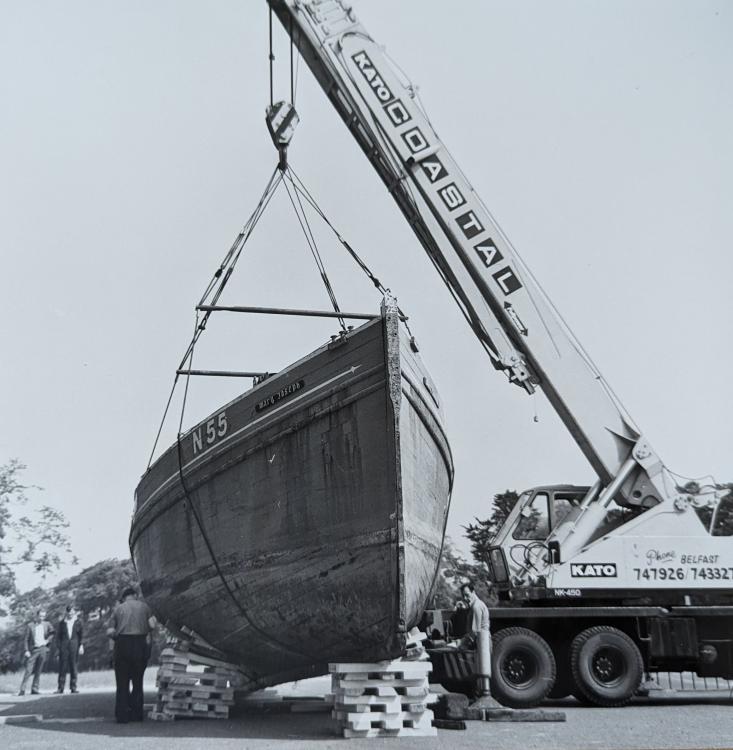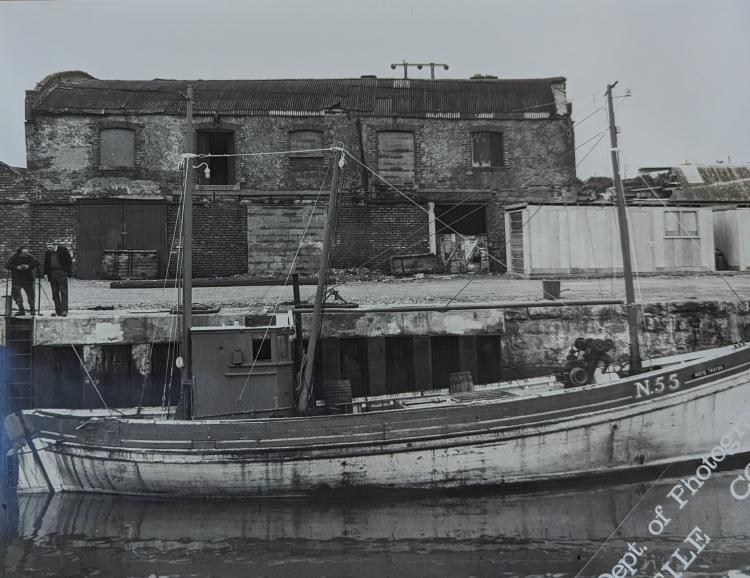- Download our Collections Development Policy
Mary Joseph
The Mary Joseph is a vernacular boat known as a nickey, these were large carvel-built sailing drifters famed for their speed. In 1877, entrepreneurial boat builder, William Paynter, built the Mary Joseph in Kilkeel, Co. Down.
History
The nickey originates from Cornwall but was adapted by fishermen from the Isle of Man and later those from the Co. Down harbour of Kilkeel. Kilkeel town is the main fishing port on the Down coast, and its harbour houses one of the largest fishing fleets in Ireland.
The first harbour was built at Kilkeel in 1860 and during the late nineteenth and early twentieth century it became a major centre for the Irish herring fishery. However, the mackerel fishery went into decline shortly after the Mary Joseph was built by Paynter in 1877.
The Mary Joseph represents a way of life of this region and the importance of the fishing industry to the people that lived there. She is one of the last original fishing vessels from the east coast of Northern Ireland at over 130 years old.
Museum Life
The Mary Joseph was acquired by the museum in 1973 as there were plans to develop the maritime galleries. Until staff were available to restore the vessel, she was initially moored in Strangford Lough as keeping the Mary Joseph afloat was the best means of preservation.
The approach was to ‘maintain the vessel, but not to restore it until options for its display and interpretation have been developed and fully considered within the context of other collections/ infrastructure priorities’.
Current Situation
The Mary Joseph is currently in storage, but without a funded programme of ongoing conservation, the condition of the vessel has continued to decline.
In 2021, Ian Clark Restoration surveyed the entire collection of boats. He outlined the very poor condition of the Mary Joseph and the risks currently posed to staff and surrounding collections.
Due to the severe degradation of this vessel, there is a health and safety risk to both staff and objects. The projected costs to stabilise and restore it are prohibitively high and are not in proportion to the opportunities for display that can be afforded in the present galleries. There are no currently no grant funds available to support large-scale maritime conservation projects. Investing such a large amount of public money into a project that will continue to remain in storage does not present a viable solution either financially or ethically.
Next Steps
Based on the maritime survey and ongoing discussions with National Historic Ships and their relevant partners, there is a proposal for the ethical deconstruction of the Mary Joseph. We have shared this proposal on the National Historic Ships website and on the Museums Association 'Find an Object' web page but have not received any proposals. We will be moving forward with the ethical deconstruction of the Mary Joseph, following its approval by the Board of Trustees. We are continuing to receive guidance and advice from National Historic Ships.
The ethical deconstruction would include e a full CAD survey, 3D and matterport scanning alongside photogrammetry ensuring that a precise detailed plan was captured enabling researchers to study her dimensions in the future. If there are parts of the boat that can be saved that demonstrate unique aspects of its build then we will endeavour to do so as has been done with previous disposals of boats.
What does disposal mean for museums?
Collections review, rationalisation and disposal are part of responsible collections management within museums. Ethical guidance for this is provided by the Museums Association. Through regular reviews we identify collections that may need to be disposed of for a variety of reasons including duplication, hazardous condition or because an object is no longer relevant to the museum’s current collection and collecting priorities.
Disposal is never the decision of a single member of staff, and we have multiple levels of approval in place for disposals, involving the National Museums NI Executive Team and Board of Trustees. As accredited museums, we act through a strict ethical and legal framework when disposing of collections, and more information on this can be found in our Collections Development Policy.
Where possible, museums will always seek disposal through transfer to another organisation in the public domain. An example of this is the work we have been doing with Hydebank Wood. Disposal helps us to ensure that our collections are more sustainable, in the long term and for public benefit and enables us to continue to fulfil our statutory obligations to collect and fully record and represent the world around us.
Get in touch
If you have any questions, or information you would like to share with us about the Mary Joseph, please send us an email.





